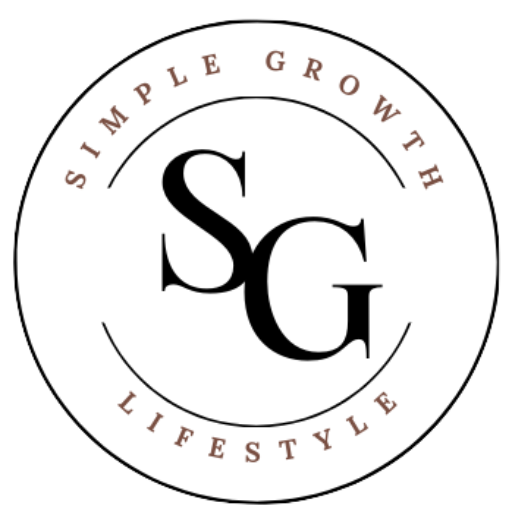How to Become an Effective Person: The 7 Habits of Highly Effective People
In the realm of personal development and self-improvement, few books have had as profound an impact as “The 7 Habits of Highly Effective People” by Stephen R. Covey. Published over three decades ago, this timeless book continues to resonate with individuals from all walks of life, offering a transformative roadmap for achieving success and fulfillment.
The book’s teachings delve into the core of human behavior, emphasizing the importance of character, integrity, and principles in shaping one’s destiny.

Rather than offering quick-fix solutions or superficial strategies, this book provides a holistic framework that nurtures long-term personal and professional growth. Covey presents a set of seven timeless habits that, when internalized and practiced, can empower individuals to become more effective, purpose-driven, and influential.
Now that you know how big of an impact this book may have on your personal development and hopefully your quality of life, I’m sure you’re wondering…what are the 7 habits?
What are the 7 habits of highly effective people?
There’s absolutely no way that I could walk through in-depth all of the habits and how to implement them into daily life (that’s why you should read the book). BUT in each chapter I had a few ah-ha moments and tactics that I’m trying to really work on in my day-to-day.
Something I never considered before starting to read more about personal development is that you can’t expect to read something once and digest all there is to get from it. You’ll likely have to go back multiple times and reread sections to refresh your memory and continue to grow.
We must not cease from exploration. And the end of all our exploring will be to arrive where we began and to know the place for the first time.
T.S. Elliot
Don’t let this deter you from starting though…you’ll be better off if you can take just one thing away from the book compared to if you don’t start at all.
BE PROACTIVE
At its essence, the book revolves around the idea that true success stems from a paradigm shift – a fundamental change in how we perceive ourselves, others, and the world around us. Within the first 3 habits you’ll focus on self-mastery — shifting your focus from external circumstances to the focus of control within yourself.
By adopting a proactive mindset, readers learn to take charge of their lives, make conscious choices, and become the architects of their own success.
Proactive people can carry their own weather with them. Whether it rains or shines makes no difference to them. They are value driven; and if their value is to produce good quality work, it isn’t a function of whether the weather is conducive to do it or not.
Stephen R. Covey
This chapter focuses in on how productive people take the responsibility for their current state in life. They take the attitude of “if I don’t like this, what can I do to fix it” instead of accepting every aspect of their life as fact or permanent.
Having a reactive mindset that gives control of your life to other people or circumstances can be a self-fulfilling prophecy. If you want to believe that something “wrong” in your life is due to external factors in which you have no control, you’re more likely to find evidence to support that.
Between stimulus and response, man has the freedom to choose.
Stephen R. Covey
If there’s one thing to take away from this chapter, I found that in order to really accomplish your goals and have success in any area of life you have to accept your ability to choose. While you may not be able to influence all aspects of your situation, by focusing on what you can control, you regain your power.
This is a power that can sometimes be frightening, but once you realize that your circumstances or relationships with others do not have more power than your own thoughts or actions, you’ll feel liberated.
BEGIN WITH THE END IN MIND
This chapter began with an incredibly shocking visualization exercise. The goal being to envision how you’d like to be remembered by people upon the completion of your life. While this is not an easy pill to swallow, it’s an exercise used to help you understand your core values.
As a society we often glamorize material goods, but when doing this exercise, I’m sure most people would want to be remembered for more than the luxury bag they carried to special occasions.
…make certain that whatever you do on any particular day does not violate the criteria you have defined as supremely important, and that each day of your life contributes in a meaningful way to the vision you have of your life as a whole.
Stephen R. Covey
The book states that all things are created twice — first in the mind and second in the physical. By focusing on your true values and creating a vision for a life that aligns with those values, you set yourself up for not only success but also fulfillment.
An impactful section of the book goes through “centers” which are guiding paradigms that we make decisions based on unknowingly. I strongly suggest reading this section of the book to understand where some of your values may stem from and how you can create a more unbiased and holistic center for yourself moving forward.
PUT FIRST THINGS FIRST
Things which matter most must never be at the mercy of things which matter least.
GOethe
This chapter focuses on personal integrity. One of the most critical personal skills you can develop is to do the things you say you will especially when the outcome will be beneficial to yourself and the life you’re building.
Building personal integrity increases self confidence and is a direct reflection of the value we place on our commitments.

The book encourages readers to think of one thing that you know if you did it everyday you’d be better for it. Some things that come to mind are exercise, a consistent skincare routine, cooking healthy meals, vitamins, reading a book, using social media less….the list could go on and on.
These are all “Quadrant II” activities — things that are not urgent but incredibly important. It’s typical to spend most of the day doing things that seem urgent — answering texts, unforeseen circumstances, last-minute deadlines — or things that are mindless and neither important or urgent like scrolling social media timelines. BUT if you focus on even a few things that are in quadrant II (exercise, self-care, relationships, etc.), then you’ll feel more productive and start to see real results in areas that fulfill your passions and goals.
…effective people are not problem-minded; they’re opportunity minded.
Stephen R. Covey
By focusing on the tasks that align with your values and goals in quadrant II, you’re looking towards opportunities and away from the firefighting tendencies of being reactive towards everything that comes to your attention.
Of course, there are always going to be true emergencies and unforeseen circumstances, but it’s okay to say no to things that may be urgent but don’t align with the values you’ve begun to prioritize. For example, watching the newest episode of The Bachelor may be urgent because you don’t want to see spoilers, but is it truly the most important task of your day?
Commitment to the things you know would make your life better is a personal victory. The sooner you can prioritize your time and the value it brings you, the sooner you’ll have a lifestyle where no goal seems too big and your relationships strengthen.
THINK WIN/WIN
“The 7 Habits of Highly Effective People” addresses the significance of interdependence – the recognition that true success is not achieved in isolation but through effective collaboration and synergy with others. Covey introduces principles of empathic communication, seeking mutual understanding, and nurturing mutually beneficial relationships.
Once you know where your values lie and that you have full control over aligning yourself with those values, the time comes to begin effectively communicating to create even greater success. The first interpersonal habit that is introduced is the idea that there is always an alternate solution.
Most often we think in terms on winners and losers. In order for one person to get an A with the curve, someone else will have to fail. If you get the promotion, that means that one of your coworkers will not. This habit explores the idea that we don’t have to carry these paradigms into other aspects of our lives when there is the ability for everyone to benefit…win/win.
Win/Win is based on the paradigm that there is plenty for everybody, that one person’s success is not achieved at the expense or exclusion of the success of others.
Stephen R. Covey
Thinking in this manner may require unlearning ideals from childhood like how collaboration in school is seen as cheating, but once win/win is learned, it’s easy to see the value in this way of thinking.
To be a leader, you should want to increase the quality of life and value for all stakeholders. This means that unless everyone is able to benefit in some way, it may be better to make no deal at all and/or revisit the situation at a later date to see if there’s a way for values to merge in a mutually beneficial decision.
If you’re interested in personal development, read these books too!
101 Essays That Will Change the Way You Think
SEEK FIRST TO UNDERSTAND, THEN TO BE UNDERSTOOD
A personal favorite of this book and a habit that will take a while to be reprogrammed, this chapter explores how in order to have effective communication you must look at situations in a non-biased way.
Its human nature to look at situations through an “autobiographical lens”. Everything that happens to us becomes a data point for use in making future decisions or in giving friends advice. You can never make informed decisions or give good advice until you truly understand the other person.
Covey gives tips on the stages of empathetic listening:
- Mimicking — the first step in learning to be an empathetic listener is simply to repeat back what you were told. This can show in an easy way that you’re hearing the person you’re communicating with correctly and eliminates some chances for misunderstanding.
- Rephrase content — similar to mimicking, you repeat what the person told you but in other words. This shows that you not only heard what they had to say but also understand what they had to say. Mimicking itself can be seen as strange and maybe even rude if you don’t have a previous relationship. Rephrasing content is a more advanced version of mimicking.
- Reflect feeling — by reflecting feeling, you are able to inquire and clarify emotions relating to a statement or conversation. Instead of interpreting the conversation internally and giving advice on perceived emotions, you can reflect their feelings to make sure that you’re hearing and understanding them correctly. ie. “It seems like you’re feeling frustrated by this.”
- Rephrase the content and reflect feeling — now you can combine feelings and content by clarifying the emotions behind the convo while also acknowledging that you’ve heard what was said.
Being able to listen empathetically will help people feel understood and if you misunderstand them, you give them the space to correct your interpretation before you impart wisdom or help them work through the emotions.
Giving advice to someone using your misinterpreted version of their feelings will only leave them feeling frustrated and emotionally suffocated. The best bet is to just listen and continue to validate that they’re being heard and understood until you’re asked for advice. Until the people involved in a situation are fully understood there is no way a win/win agreement can be met.

SYNERGIZE
What is synergy? Simply defined, it means that the whole is greater than the sum of the parts.
Stephen R. Covey
The next habit of the book is all about teamwork and open-minded communication. The goal of synergy is to create situations that are more productive by being focused on service, trust, and contribution versus selfishness and judgment.
Synergy is simply reaching the win/win scenarios in all decisions and its reached by focusing on building trust and cooperating with peers. Even in situations where a win/win may be impossible, focusing on reaching a synergistic outcome will create the most effective compromise for everyone involved.
By making a concerted effort each day to apply habits 4 and 5, habit 6 of synergy will likely come easy because it’s the combination of effective understanding and an abundance mindset.
SHARPEN THE SAW
Habit 7 focuses on maintaining and renewing four aspects of life that will help you remain balanced and value focused: physical, mental, social, and spiritual health.
This is the single most powerful investment we can ever make in life —investment in ourselves , in the only instrument we have with which to deal with life and to contribute.
Stephen R. Covey
Physical — taking care of your physical health means taking time each day to move your body especially if you work in a more sedentary field. Eating nutritious foods that help you reach you daily vitamin needs and getting enough sleep each night.
Spiritual — taking time each day to reflect and think about where you are in life. Meditate and relieve yourself of the stress of day-to-day life even if it’s only for a few minutes.
Mental — continue to push yourself mentally to build your integrity by doing what you say you’ll do and when you say you’ll do it. Challenge yourself to expand your cultural awareness and try to better understand yourself by writing down thoughts and experiences in a journal and reflecting back on those thoughts later.
Social — communicate with the ideas of win/win and empathetic listening at the forefront of your mind. Challenge yourself to truly focus on understanding people around you before offering help. Approach your relationships in a way where everyone can leave interactions feeling valued and understood.
Final Thoughts
These insights enable readers to enhance their interpersonal skills, foster trust, and create harmonious and productive environments both at home and in the workplace. By internalizing these principles, readers can cultivate a proactive mindset, sharpen their leadership abilities, and achieve a higher level of personal and professional effectiveness.
“The 7 Habits of Highly Effective People” stands as a guiding light for individuals who aspire to reach their full potential. It promises long-lasting personal and professional excellence.
As someone who enjoys learning about how to be at my personal best, these seven habits are helpful in discovering the keys to unlocking your true potential.
How to read this book?
For readers who have an amazon prime membership, this book is free on the kindle app. Otherwise you can find a physical copy of the book or an online copy here:







One Comment
Comments are closed.